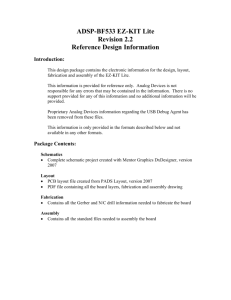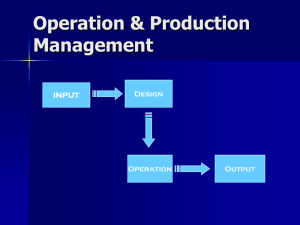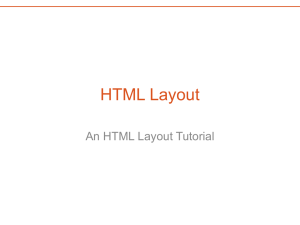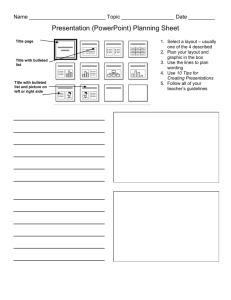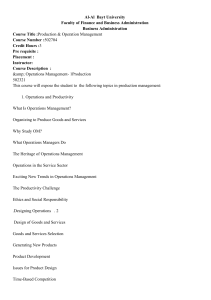Layout design rules
advertisement
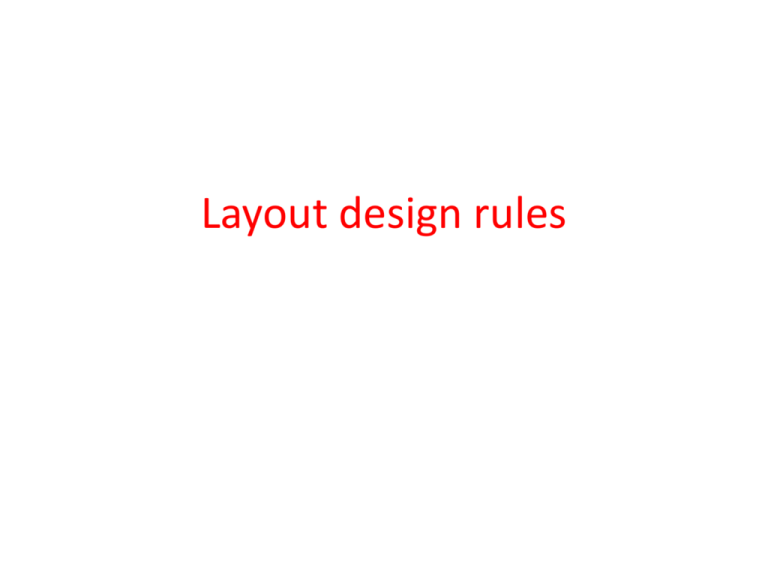
Layout design rules Introduction Layout rules is also referred as design rules. It is considered as a prescription for preparing photomasks. Provides a link between circuit designer and processor engineer during manufacturing phase. Design rules specify geometric constraints on the layout artwork. • Objective: To obtain a circuit with optimum yield. To minimize the area of the circuit. To provide long term reliability of the circuit. Design rules represent the best compromise between performance and yield: • More conservative rules increase yield. • More aggressive rules increase performance. • Design rules represent a tolerance that ensures high probability of correct fabrication - rather than a hard boundary between correct and incorrect fabrication. 2 Layout or Design Rules • Two approaches to describing design rules: • Lambda-based rules: Allow first order scaling by linearizing the resolution of the complete wafer implementation. To move a design from 4 micron to 2 micron, simply reduce the value of lambda. Worked well for 4 micron processes down to 1.2 micron processes. However, in general, processes rarely shrink uniformly. Probably not sufficient for submicron processes. • Micron rules: List of minimum feature sizes and spacings for all masks, e.g., 3.25 microns for contact-poly-contact (transistor pitch) and 2.75 micron metal 1 contact-to-contact pitch. Stated at some micron resolution, alpha() and beta ( ) rules. Basic feature size is defined in terms of while minimum grid size is described by . and may related by a constant factor. Normal style for industry. 3 Layout or Design Rules 4 Lambda-based p-well rules These rules are only representative and are the result of averaging a large number of processes. The rules are defined in terms of: Feature sizes Separations and overlaps. 5 Mask No. 1:Thinox 6 Mask No. 2: P-well 7 Mask No. 3: Poly 8 Mask No 4: P-plus 9 Mask No 5: Contact 10 Mask No 5: Contact 11 Contact No 6: Metal 12 CMOS Design Rules A layout resembles the top view of the IC The layout design is 2-dimentional from the viewpoint of an IC designer. in fact, designers normally do not control the depth dimension of an IC. The depth of a transistor source or the thickness of a metal wire is determined by the fabrication process. The layout designer only decides the dimensions and locations of the transistors and interconnects them into the target circuit. The minimum feature size of a technology is typically denoted by the narrowest width of a polysilicon wire that it can produce. For instance, if the narrowest polysilicon wire in a technology is 1m wide, it is called 1 m technology. Design rules capture the physical limitations of a fabrication process. Design rules release designers from the details of fabrication so they can concentrate on the design instead. 13 CMOS Design Rules In -based design rules (developed by Mead and Conway) the minimum feature size is 2. For a 2m technology, =1m Different fabrication technologies apparently require different rules. Drawbacks of scalable design rules: the layout produced according to scalable design rules are often larger than necessary. For example, a minimum spacing of 4m may be ordered although in reality 3.2m is sufficient. 14 MOSIS Design rules Scalable -based design rules are used in MOSIS projects. http//:www.mosis.org A subset of MOSIS scalable CMOS (SCMOS) design rules is used to provide an overview of their use. 15 Layout Examples Example 1: symbolic layout for and inverter According to -based design rules, the smallest transistor channel is 2 long and 3 wide (the minimum width of diffusion region). However, in the following figure the width of transistor has been increased to 4 so that a diffusion contact (4 X 4 required) can be readily made. This 2 X 4 transistor is referred as the minimum size transistor. An inverter formed of minimum size transistors is called a minimum size inverter. Area: 42 X 15= 6302 Stick diagram 16 Layout Examples Example 3.1 :Alternative layouts for inverter Area of both: 40 X 18= 7202 17
